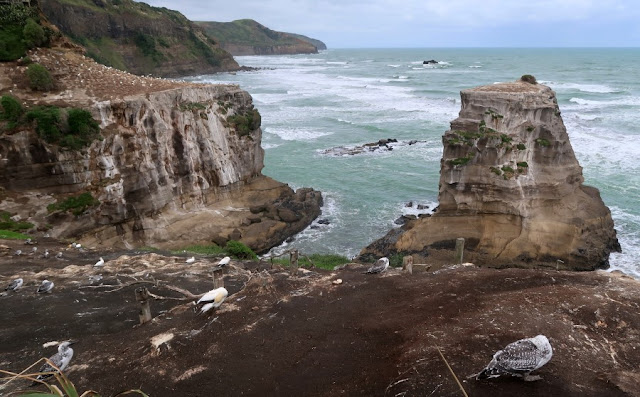New Zealand - Muriwai Beach Gannet Colony

Muriwai Beach is not far west of Auckland and is home to a breeding colony of gannets. These birds were fun to watch as the adults flew back and forth between the feeding grounds out to sea and their still flightless offspring at the cliffside nesting sites. The juveniles tap the beaks of the returning parents as they beg for a fishy regurgitated meal. Yum. Muriwai Beach Gannet Colony The white ones are the adults; the gray ones the juveniles. Adult Gannet Each little mound is a nesting site. Once the chicks have grown they fly off to Australia, usually by May. Since many mounds were unoccupied and the existing offspring were nearly as big as their parents when we visited in mid-March, I suspect that many have already flown off. Juvenile Gannet This juvenile was testing its wings, though it never did take off. But you could tell it was thinking about it. Video: a gr...



